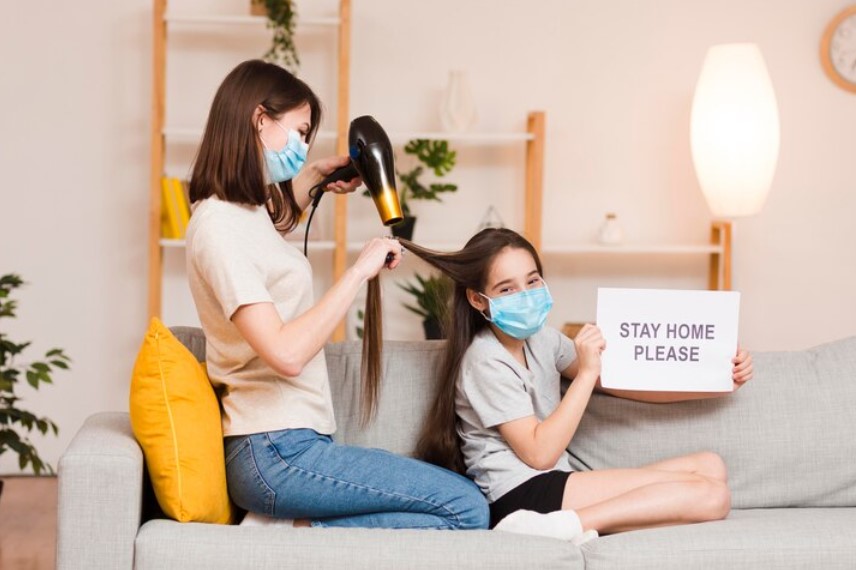24
Jul 2025
How to Reduce Viral Transmission at Home
Published in Travel Tips on July 24, 2025

As colder months roll in, so does the heightened risk of illness. Whether it's COVID-19, the flu, or common cold viruses, our homes can easily become hotspots for transmission, especially when family members live closely together and spend more time indoors. Fortunately, there are practical and evidence-based steps you can take to reduce the spread of these illnesses at home.
1. Wear Masks Indoors if Someone is Sick
One of the simplest yet most effective ways to limit transmission is wearing a mask, especially when someone in the household is showing symptoms. According to Professor Catherine Bennett, an epidemiologist at Deakin University, wearing a well-fitted mask indoors can significantly reduce the chances of the virus being passed on through respiratory droplets.
While mask-wearing may not be second nature to everyone anymore, it’s a small act that can make a big difference—particularly if you live in an apartment, have limited space, or share common areas like the kitchen and bathroom.
2. Increase Ventilation and Fresh Air Circulation
In the colder seasons, homes are often tightly sealed to keep the warmth in. However, this creates a perfect environment for viruses to linger in the air. Improving airflow can reduce the concentration of virus particles indoors. Open windows and doors regularly—if only for a few minutes—to let fresh air in and stale, potentially contaminated air out.
Using fans to direct air toward open windows or turning on exhaust fans in the kitchen and bathroom can also enhance ventilation. Air purifiers with HEPA filters are another helpful tool, especially in households with vulnerable individuals.
3. Clean Shared Surfaces Frequently
Viruses like the flu and COVID-19 can survive on surfaces for hours or even days. Shared areas—such as the bathroom, kitchen, or remote controls—should be cleaned regularly, particularly if someone in the home is unwell. Focus on disinfecting high-touch areas like doorknobs, light switches, handles, and faucets.
Don’t forget to wash your hands thoroughly and frequently. Encourage others at home to do the same, especially before eating or touching their face.
4. Avoid Sharing Personal Items
Another easy step to prevent transmission is avoiding the sharing of cups, utensils, towels, or bedding. Even if symptoms are mild, infected individuals can still shed virus particles and unknowingly pass them on. Assign separate items for the sick person whenever possible.
If space allows, designate a specific bathroom for the sick individual. If that’s not possible, be extra diligent in cleaning shared facilities after each use.
5. Stay on Top of Vaccinations
Being up-to-date with vaccines—especially for influenza and COVID-19—provides crucial protection against severe illness and hospitalisation. It also helps reduce the viral load, meaning if someone does get infected, they’re less likely to pass it on to others in the household.
Dr. Bruce Foggo, a GP and medical adviser to the Australian government, reminds everyone that vaccinations remain one of the strongest tools in our public health arsenal. It's especially important for those with underlying health conditions, older adults, and those who care for vulnerable people.
6. Isolate and Rest if You're Sick
If you develop symptoms of any respiratory illness, staying home and isolating is still highly recommended—even if it’s “just a cold.” Avoiding contact with others until your symptoms improve (especially fever, coughing, or sneezing) is key to preventing transmission.
Where possible, the sick person should stay in a separate room and use a different bathroom. Meals should be delivered to their room, and interaction kept to a minimum. It's a kindness not only to those you live with but to the broader community.
7. Use Antivirals If Eligible
In some cases, especially for those who are at higher risk of complications, antivirals may be prescribed to help shorten the duration or reduce the severity of illness. Early consultation with a healthcare provider is essential, as most antivirals work best when taken within a day or two of symptom onset.
This can be particularly helpful in protecting elderly household members, people with compromised immune systems, or those with chronic medical conditions.
8. Have a Household Health Plan
Finally, preparation goes a long way. Stock your home with essentials like masks, hand sanitiser, cleaning supplies, pain relievers, tissues, and a thermometer. Know your local testing locations or telehealth services, and stay informed on current health advice through reliable sources like your state health department or trusted news outlets.
Final Thoughts
Preventing the spread of viruses like COVID-19, influenza, and the common cold doesn’t have to be overwhelming. Simple steps—like mask-wearing, improved airflow, regular cleaning, and up-to-date vaccinations—can make a significant difference in protecting your household. As we spend more time indoors this winter, these small efforts are essential acts of care for ourselves and our loved ones.









